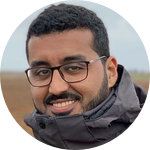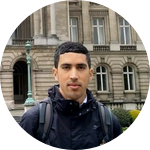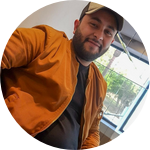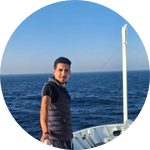About This Project
Tsunamis can cause massive damage and loss of life. They are triggered by underwater earthquakes but the exact mechanisms that influence their occurrence and magnitude are still not well understood. In this project, I'll use Omniverse, a powerful platform for creating and simulating realistic 3D environments, to model and study the causes and effects of tsunamis. I hope to gain new insights to develop better methods for predicting and mitigating their impact.
Ask the Scientists
Join The DiscussionWhat is the context of this research?
Tsunamis are large waves that are generated by the displacement of water due to seismic or volcanic activity. They can cause widespread destruction, flooding, erosion, and contamination of coastal areas, as well as human casualties and displacement. According to the World Health Organization (WHO), tsunamis can travel thousands of kilometers with speeds up to 800 km/h 1. The same source also states that between 1998-2017, tsunamis caused more than 250,000 deaths globally, including more than 227,000 deaths due to the Indian Ocean tsunami in 2004 1
The most recent major tsunami occurred in 2011 in Japan, following a magnitude 9.0 earthquake that also triggered a nuclear meltdown at the Fukushima Daiichi power plant.
What is the significance of this project?
This project is significant because it will use Nvidea Omniverse, a platform for creating and simulating realistic 3D environments, to study the causes and effects of tsunamis. This will advance our knowledge and understanding of one of the most complex and unpredictable natural phenomena that affect our planet.
The project will also provide valuable information and tools for improving our preparedness and response to tsunami hazards, and for raising awareness and interest in tsunami science and risk management among various stakeholders and communities 12.
What are the goals of the project?
I expect to obtain new data and insights into the physics and dynamics of tsunamis using Nvidea Omniverse. I hope to identify the key factors that influence the occurrence and magnitude of tsunamis, as well as their spatial and temporal patterns. I also hope to discover new ways of detecting and forecasting tsunamis using real-time data from sensors and satellites. Furthermore, I hope to evaluate the potential impact of tsunamis on different types of coastal areas, such as urban areas, rural areas, natural reserves, etc., and to propose effective strategies for reducing their vulnerability and enhancing their resilience.
Budget
The laptop with high-performance graphics card is necessary for running Nvidea Omniverse, which is the main platform that I will use for creating and simulating realistic 3D environments of tsunamis. Without a laptop that can handle the high computational and graphical demands of Nvidea Omniverse, I will not be able to conduct my research project effectively and efficiently.
The external hard drives are necessary for storing large amounts of data that I will generate and collect from Nvidea Omniverse, as well as from other sources, such as satellite imagery, bathymetry maps, seismic records, and historical records of tsunami events. These data are crucial for creating accurate and detailed 3D models of the ocean floor, the water surface, and the coastal terrain, as well as for analyzing and comparing different scenarios and experiments of tsunamis. Without enough storage space, I will not be able to manage and access my data properly and securely.
Endorsed by
 Project Timeline
Project Timeline
This project will take three years to complete, from September 2023 to August 2026. The project will be divided into four main phases: data collection and preparation, 3D modeling and simulation, data analysis and comparison, and dissemination and communication. Each phase will have specific objectives, tasks, and deliverables, as described below.
Oct 19, 2023
Project Launched
Feb 28, 2024
Phase 1 : Data collection and preparation
Feb 28, 2024
Deliverable: A dataset of high-quality and relevant data for 3D modeling and simulation of tsunamis.
Feb 28, 2024
Tasks: Import data from various sources, (satellite imagery, bathymetry maps, seismic records, and historical records of tsunami events)
Feb 28, 2024
Objective: Collect and prepare the data needed for creating and simulating realistic 3D environments of tsunamis.
Meet the Team
Affiliates
Affiliates
Affiliates
Hakim Mhaidrat
I am a geologist and environmental scientist with a passion for studying the interactions between the Earth and its natural and human systems. I have a licence degree in geology from the Chouaib Doukkali University and a master’s degree in environmental geosciences from the Abdelmalek EssaadiUniversity . My research interests include natural hazards, climate change, water resources, and sustainable development. I have participated in several projects and on these topics, using various methods and tools, such as fieldwork, remote sensing, GIS, and modeling. I am currently pursuing a PhD project on using Nvidea Omniverse to study the causes and effects of tsunamis, with the aim of improving our knowledge and preparedness for this complex and unpredictable natural phenomenon. I am also an avid traveler, photographer, and blogger, who loves to explore and share the beauty and diversity of our planet.
Abdelouahab El Haissen
My name is El Haissen Abdelouahab, a PhD student at Université Chouaib Doukkali El Jadida and the National Institute of Fisheries Research. I hold a master's degree in Oceanography of Marine Aquatic Ecosystem and Modeling, as well as a master's in Fundamental Geology. My research primarily focuses on the Moroccan Mediterranean continental shelf, emphasizing land-sea interactions, sediment dynamics within coastal watersheds, oceanography of coastal ecosystems, and modeling.
Currently, our team is dedicated to utilizing Nvidia Omniverse for our research theme. Our objective is to study the causes and effects of tsunamis, aiming to enhance our understanding and preparedness for this complex and unpredictable natural phenomenon. We plan to employ this technology to simulate and model various aspects of tsunamis.
The interdisciplinary nature of our research integrates oceanography and geology, enabling a comprehensive analysis. By collaborating with experts and harnessing advanced simulation tools, we aim to make a substantial contribution to our understanding of tsunamis. Furthermore, our research holds the potential to enhance our preparedness and mitigation strategies, ultimately bolstering the safety and resilience of coastal communities.
SAAD ARKKOU
My name is Arkkou Saad, and I am a Ph.D. student at Chouaib Doukkali University, specializing in marine sciences. With a master's degree in coastal engineering from the same institution, I have a strong foundation in this field. My research is primarily focused on the coastal regions of Morocco, particularly the Moroccan Mediterranean continental shelf. I explore various aspects of land-sea interactions, sediment dynamics within coastal watersheds, and the oceanography of coastal ecosystems. Additionally, I have a background in fundamental geology, which complements my interdisciplinary approach to research.
Currently, my team is dedicated to leveraging cutting-edge technology, such as Nvidia Omniverse, for our research. Our overarching goal is to investigate the causes and effects of tsunamis. Tsunamis are complex and unpredictable natural phenomena, and understanding them is vital for the safety and resilience of coastal communities. We plan to use Nvidia Omniverse to simulate and model different aspects of tsunamis, which will help us gain valuable insights into these destructive events.
The interdisciplinary nature of our research, which combines oceanography and geology, allows us to provide a comprehensive analysis of tsunamis. By collaborating with experts and utilizing advanced simulation tools, we aim to make significant contributions to our understanding of these events. Ultimately, our research has the potential to enhance preparedness and mitigation strategies, thereby increasing the safety and resilience of coastal communities.
Lab Notes
Nothing posted yet.
Project Backers
- 1Backers
- 1%Funded
- $2Total Donations
- $2.00Average Donation




